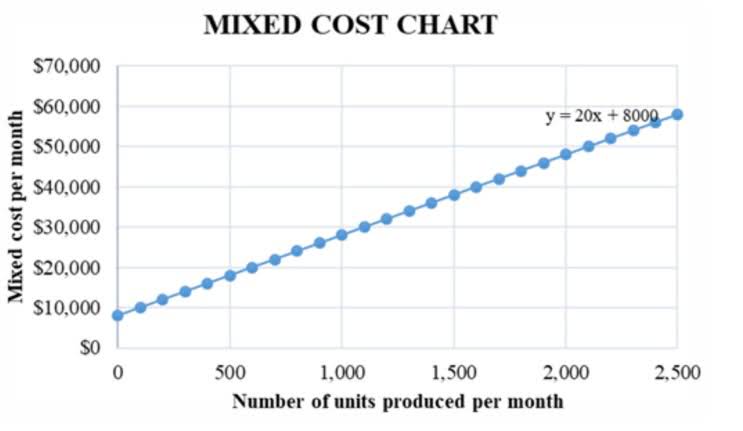
Similarly, the guidance in ASC 460 on accounting for guarantee liabilities, which has existed for two decades, is often difficult to apply because the determination of whether an arrangement constitutes a guarantee is complex. Banks that issue standby letters of credit or similar obligations carry contingent liabilities. All creditors, not just banks, carry contingent liabilities equal to the amount of receivables on their books.
Any of these circumstances could cost a company money, but the amount of that cost is unknown. Recording a contingent liability is a noncash transaction because it has no initial impact on cash flow. Instead, the creation of a contingent how to record a contingent liability liability notifies stakeholders of a potential liability that could materialize in the future. This is consistent with the need to fully disclose material items with a likelihood of impacting a company’s finances in the future.
Recognition of a provision
This means that a loss would be recorded (debit) and a liability established (credit) in advance of the settlement. If a contingent liability is deemed probable, it must be directly reported in the financial statements. Nevertheless, generally accepted accounting principles, or GAAP, only require contingencies to be recorded as unspecified expenses. Now assume that a lawsuit liability is possible but not probable and the dollar amount is estimated to be $2 million. Under these circumstances, the company discloses the contingent liability in the footnotes of the financial statements. If the firm determines that the likelihood of the liability occurring is remote, the company does not need to disclose the potential liability.
Dechert Re:Torts – Key Developments in Product Liability and Mass … – JD Supra
Dechert Re:Torts – Key Developments in Product Liability and Mass ….
Posted: Tue, 31 Oct 2023 16:01:33 GMT [source]
In April 2001 the International Accounting Standards Board adopted IAS 37 Provisions, Contingent Liabilities and Contingent Assets, which had originally been issued by the International Accounting Standards Committee in September 1998. That standard replaced parts of IAS 10 Contingencies and Events Occurring after the Balance Sheet Date that was issued in 1978 and that dealt with contingencies. We offer a broad range of products and premium services, including print and digital editions of the IFRS Foundation’s major works, and subscription options for all IFRS Accounting Standards and related documents. Every purchase contributes to the independence and funding of the IFRS Foundation and to its mission. Read our latest news, features and press releases and see our calendar of events, meetings, conferences, webinars and workshops. Osman Ahmed is a member of WSO Editorial Board which helps ensure the accuracy of content across top articles on Wall Street Oasis.
History of IAS 37
Since it has the potential to affect the company’s Cash flow and net income negatively, one has to take important steps to decide the impact of these contingencies. The accrual account enables https://www.bookstime.com/articles/minimum-wage-and-overtime-pay the company to record expenses without requiring an immediate cash payment. If the case is unsuccessful, $5 million in cash is credited (reduced), and the accruing account is debited.
In this case, the company needs to account for contingent liability by making proper journal entry if the potential future cost is probable (i.e. likely to occur) and its amount can be reasonably estimated. GAAP accounting rules require probable contingent liabilities—ones that can be estimated and are likely to occur—to be recorded in financial statements. Contingent liabilities that are likely to occur but cannot be estimated should be included in a financial statement’s footnotes.
KPMG Executive Education
Each business transaction is recorded using the double-entry accounting method, with a credit entry to one account and a debit entry to another. Contingent liabilities, although not yet realized, are recorded as journal entries. Suppose a lawsuit is filed against a company, and the plaintiff claims damages up to $250,000. It’s impossible to know whether the company should report a contingent liability of $250,000 based solely on this information. Here, the company should rely on precedent and legal counsel to ascertain the likelihood of damages.
Such contingency is neither recorded on the financial statements nor disclosed to the investors by the management. This shows us that the probability of occurrence of such an event is less than that of a possible contingency. A probable liability or potential loss that may or may not occur because of an unexpected future event or circumstance is referred to as contingent liability. These liabilities will get recorded if it has a reasonable probability of occurring. A loss contingency which is possible but not probable will not be recorded in the accounts as a liability and a loss.
Do Not Disclose a Contingent Liability
The key principle established by the Standard is that a provision should be recognised only when there is a liability i.e. a present obligation resulting from past events. A contingent liability is a liability that may occur depending on the outcome of an uncertain future event. A contingent liability has to be recorded if the contingency is likely and the amount of the liability can be reasonably estimated. Both generally accepted accounting principles (GAAP) and International Financial Reporting Standards (IFRS) require companies to record contingent liabilities. Contingent liabilities are those that are likely to be realized if specific events occur.

In the United States, Deloitte refers to one or more of the US member firms of DTTL, their related entities that operate using the “Deloitte” name in the United States and their respective affiliates. Certain services may not be available to attest clients under the rules and regulations of public accounting. On the Radar briefly summarizes emerging issues and trends related to the accounting and financial reporting topics addressed in our Roadmaps.
These liabilities will get recorded if the liability has a reasonable probability of occurrence. Companies operating in the United States rely on the guidelines established in the generally accepted accounting principles (GAAP). Under GAAP, a contingent liability is defined as any potential future loss that depends on a “triggering event” to turn into an actual expense. Two classic examples of contingent liabilities include a company warranty and a lawsuit against the company. Both represent possible losses to the company, and both depend on some uncertain future event.
The information contained herein is of a general nature and is not intended to address the circumstances of any particular individual or entity. Although we endeavor to provide accurate and timely information, there can be no guarantee that such information is accurate as of the date it is received or that it will continue to be accurate in the future. No one should act upon such information without appropriate professional advice after a thorough examination of the particular situation. If some amount within the range of loss appears at the time to be a better estimate than any other amount within the range, that amount shall be accrued. When no amount within the range is a better estimate than any other amount, however, the minimum amount in the range should be accrued.
